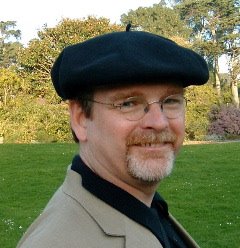This sermon is for Gay/Lesbian/Bisexual/Transgendered Pride Sunday service which Chalice holds in combination with Forest Hill Christian Church in San Francisco each year during San Francisco's Pride activities.
Joshua 4:1-8
The Hebrew people were on the very brink of entering the land promised to them. They just had to cross the Jordan River and they would be in their new homeland after 40 some years of wandering in the wilderness. It was indeed a momentous occasion if there ever was one.
But how to remember such an occasion? How to make sure the future generations would know how important this event was? How would those who followed know that this spot on the Jordan was where the water stopped flowing so that the people could cross over and the ark of the covenant would remain dry on the shoulders of the priests carrying it?
Joshua told a member of each of the 12 tribes to select a stone from the river and carry it to the bank where it would be placed as a memorial. Then when their children and grandchildren asked them “What do these stones mean?” they could relate the story of their entrance into the Promised Land.
“What do these stones mean?” We all hope that future generations will look back kindly on our lives and ask “What does this mean?”, “What does that mean?” “ Why did you do this?” A part of being human is hoping that somehow our name and legacy lives on beyond us. We all want future generations to look back from some future date and remember something we did or said that changed something for the better. “What do these stones mean?”
What stones are we leaving behind in the struggle for equal rights for lesbian, gay, bisexual, and transgendered people? What markers are there that will cause those who come after us to stop and give thanks for our work, for our perseverance, for our very selves?
Perhaps some 30 or 40 or 100 years in the future, someone will come across a pink triangle and learn that homosexuals were incarcerated in the Nazi death camps and forced to wear that pink triangle as a symbol. The pink triangle helps us remember that l/g/b/t people have sometimes suffered with their lives for being who they are. They’ll know that the symbol was readopted to honor those who died in the concentration camps. What do these stones mean?
Maybe someone will come across a rainbow flag and discover that gay pride movements swept across many cities and these flags were flown to show the world that l/g/b/t people are proud of who they are. The flag was developed in 1978 by San Francisco artist Gilbert Baker to highlight the diversity that’s within the gay community. It’s frequently flown now across the globe wherever l/g/b/t people can openly express who they are. What do these stones mean?
Possibly someone from the future will find an “I do support the freedom to marry” sign and wonder in amazement at the fact that there was a time when same-sex couples were denied the right to marry the person of their choice. They will find out about the struggle we are in the midst of right now for that one part of equality to be gained. Maybe they’ll also learn of the struggle of people to serve in the military without regard to sexual orientation. Or of ministers to be ordained and serve as God calls them regardless of their orientation. What do these stones mean?
What stones will you leave behind? Will future generations know of the work you did to make our world, their world a better place, a place where equality for all people is assured? Will people know of your work and dedication to bringing in God’s realm to a needy world? In the shadowed corners all around us, have you brought the light that shines forth from within you that is a reflection of God’s love?
Truly, we are leaving behind stones all the time, stones that will indicate how deeply we were involved in creating a more just and equal world. We set up stones as markers when we write to our representatives about issues; when we volunteer our time; when we give of ourselves with our talents, or our resources; when we work for justice in our world and the the world that is yet to come.
“What do these stones mean” is indeed the question that will be asked by those from yet unborn generations. When the stories of the struggle for justice for all people are told, will your name be included? Will your work be found amidst the stones that are left behind?
Stones
Labels:
gay marriage,
gay pride,
Israelites,
l/g/b/t,
pink triangle,
rainbow,
remembering,
stones
Subscribe to:
Post Comments (Atom)





No comments:
Post a Comment